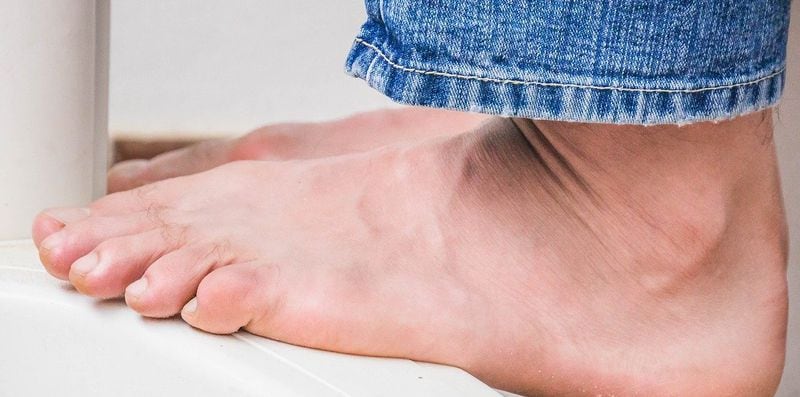It’s so common that it goes unnoticed, but improper care can lead to life-threatening complications. Three dermatologists comment on the mistakes that lead us to infect our feet and how to avoid them.
In The last of us, HBO’s new sensational series, the human species is threatened by the Cordyceps, a type of mutated fungus that infects people, turning them into zombie-like parasites. A bite is enough to infect and parasitize. Hope for a cure rests with Ellie, a 14-year-old girl who seems immune to mycosis.
In recent days, the media has revealed that the Cordyceps it really exists and is capable of parasitizing insects, leaving the concern open: could it also invade the human organism and trigger a situation like the one that occurs in The last of us? The answer is no. At least for now.
However, fungal infections do exist and vary in their forms and levels of severity. Study A recent study conducted by Eduardo Álvarez, an academic at the University of Chile, for the Global Action Fund Against Fungal Infections (GAFFI), determined that in Chile approximately 325,000 people suffer from serious fungal infections.
In immunocompromised people, these infections can lead to up to 90% mortality, but these are extreme cases, which do not affect more than 3% of the Chilean population. But other types of mycosis – as any pathology caused by a fungus is called – are much more common.
One of the most common is the athlete’s foot, popularly known as “athlete’s foot”, which mainly affects the skin and nails of the feet, and usually has a high proliferation of cases in the summer. Its culprits are dermatophytes, hyaline fungi that parasitize the skin tissue of humans and animals.
“Athlete’s foot is usually mild and it is not common to see complications, since they are infections that only occur on the surface of the skin”, explains Luz Rodríguez, specialist in dermatology, epidemiology and aesthetic medicine at the NúcleoSalud Clinic.
How do dermatophytes work? These “cross the epidermal barrier of our skin, hair or nails because of a crack or break, and there they produce the infection”. The affected areas can also spread to other areas, especially the groin. The worst is the unbearable itching caused by the infection.
How to identify athlete’s foot?
Luis Felipe Parada, dermatologist at Clínica Indisa, says that among his main symptoms and signs is “a scaly rash with itching or itching.” Less common, he says, is the bad smell that is produced by other types of agents. It is an infection that occurs in girls, boys and adults, although the prevalence seems to be higher in men between the ages of 20 and 50.
Its worldwide prevalence reaches 15%, although it is probably much higher. Luz Rodríguez comments that around 20% of carriers of the fungus are asymptomatic, a worrying situation given its high level of contagion.
“It is transmitted from human to human,” explains Constanza Ullrich, dermatologist at Clínica RedSalud Vitacura. “That is, if a person touches the toes of other people who have it, wears the same shoe, or has contact with contaminated surfaces, they can become infected.”
A summer of mushrooms
Ringworm of the feet, as athlete’s foot is also called, is a year-round threat. However, new cases occur mainly in summer: hot and humid environments favor the proliferation of dermatophytes and, finally, mycoses. “These fungi can live for a considerable time on non-living structures, although they usually feed on skin,” Ullrich says. “The small replacement of socks or shoes” promotes its appearance.

Its ability to live in uninhabited structures and its strong power of contagion are enhanced in the summer context, when outdoor activities are part of daily life. “Swimming pools, gymnasiums or campsites are places conducive to the development and spread of this type of fungus. In these there is the perfect combination of humidity, heat and sweat, to develop an athlete’s foot”, emphasizes Luz Rodríguez.
From the common symptom to the extreme
One may wonder why this fungus occurs on the feet. According to Constanza Ullrich, this is because it is “a dark, warm area that tends to be a perfect environment for fungus to grow.” However, athlete’s foot infection can spread to other parts of the body such as the fingernails and groin.
“Having a fungal infection of the feet has been shown to increase the risk of other bacterial infections; it acts as a gateway,” explains dermatologist RedSalud. This represents a greater risk for immunocompromised people, “such as patients with diabetes, immunological treatment or cancer”, as they can develop potentially serious bacterial infections. “Therefore, it’s not just a cosmetic problem, but a medical one,” says Ullrich.
On the other hand, “there may be cases in which people with skin cracks caused by fungi experience the entry of bacteria into the body and, once inside, they can cause the spread of the infection”, explains Luz Rodríguez.
According to the dermatologist, another risk to which a person with athlete’s foot is exposed and who does not take the necessary precautions is that his mycosis leads to cellulite. “It can be caused by a bacterial infection that penetrates deep layers of skin, fat and soft tissue.”
This is why it is important to recognize the presence of the fungus as early as possible. How to identify it? “If we detect a red area of the skin that hurts, is hot and sensitive to the touch, it is necessary to act on the matter and seek advice from a specialist”, explains Rodríguez. And he adds: “The most serious cases can cause blood poisoning (sepsis) or spread the infection to the bones.” And it’s not so light anymore.
Since the fungus can be transmitted through the hands or through the use of towels, Luis Felipe Parada adds that “it is very important to detect it in time and see what the sources of infection may be”.
Common errors
It’s worth asking: why do they call it athlete’s foot? It seems that the infection has always been common among athletes. “It can affect anyone, but there are those who are more at risk, for example those who have to work with safety shoes, those who sweat profusely or those who wear very closed shoes for a long time,” says Ullrich.
In this line, completes the dermatologist, athletes have a greater probability of contagion, “due to the type of shoes and since their feet sweat more”.
Humidity is obviously a risk factor. However, it is common that people do not take enough care to avoid it on their feet. According to specialists, not drying your feet well after showering or changing your socks every day are common mistakes that cause the appearance of fungal infections.
The same goes for walking “barefoot” in common areas, like showers or bathrooms, or even not changing shoes or at least ventilating them after use.

Luz Rodríguez says that once the fungus has infected people, they usually wait a long time, don’t see a dermatologist, or rather self-medicate. “Some, for example, take corticosteroids like betamethasone, or mix them together, which often makes the fungus worse or doesn’t get better.” This is obviously a blunder.
“The recommendation is not to self-medicate, not to apply irritating substances thinking that they are going to be disinfected such as chlorine, alcohol, etc. Also avoid the secrets of nature because sometimes, in addition to be infected by fungi, patients are irritated by other situations”, adds Constanza Ullrich.
Part of the symptoms of athlete’s foot is a terrible, endless itch, which causes people to scratch and rub their feet against any surface. The problem is that, since the skin is more sensitive than usual, friction causes it to break quickly, generating sores that add another component to the discomfort and discomfort: burns. For this reason, Rodríguez advises that if there is a lot of itching, “instead of scratching the area with your fingernails, it is better to put your feet in cold water”.
The treatment: simple, although sacrificed
Treated in time, the treatment of athlete’s foot is relatively simple, even if it varies according to “the forms of mycosis”, as Ullrich puts it. “Generally, more skin variants, which do not affect the nails, are treated with an antifungal cream. However, people with nail fungus must have a slightly longer treatment, which requires some preliminary examinations, but it is not difficult to access and if consulted, it can be treated”, explains the dermatologist.
The problem with treatment is that it can be slow and requires certain sacrifices, such as avoiding alcohol. “That’s the big limitation of why patients don’t want to undergo the treatments,” says Ullrich.
Prevention is better than cure
Given the above, the most logical thing to do is to aim for prevention: it does not require great sacrifices and it is quite simple and accessible. On the one hand, at this time of the year, it is advisable to use a foot deodorant or powder in your shoes or slippers. On the other hand, Luz Rodríguez suggests “keeping your feet clean and dry, ideally washing them twice a day and drying them thoroughly between your toes after bathing”. For this, one possibility is to use a hair dryer.
The Clínica NúcleoSalud dermatologist also suggests wearing well-ventilated shoes and avoiding those made of synthetic material. “The best thing is to wear sandals so that the feet are airy,” he says.
Why loafers and sneakers are the best shoes for summer
Constanza Ullrich adds that if a person has fungus and wears the same pair of shoes every day, “even if you take hygienic measures, infection is almost certain”. Therefore, “you must also have a substantial toilet and hopefully a good replacement of shoes and socks.” For those who sweat a lot on their feet, the recommendation is to change socks.
It is also essential to be careful when using personal hygiene items, such as towels or bathroom floors, “especially if someone in the house is infected or if you have doubts . And of course, try not to share it with other members of the household.
And in public places, you have to take preventive measures: wear Hawaiian sandals or sandals in swimming pools, showers and locker rooms. will not be the Cordyceps of The last of usBut with ringworm, prevention is better than cure.
Source: Latercera
I am David Jack and I have been working in the news industry for over 10 years. As an experienced journalist, I specialize in covering sports news with a focus on golf. My articles have been published by some of the most respected publications in the world including The New York Times and Sports Illustrated.


